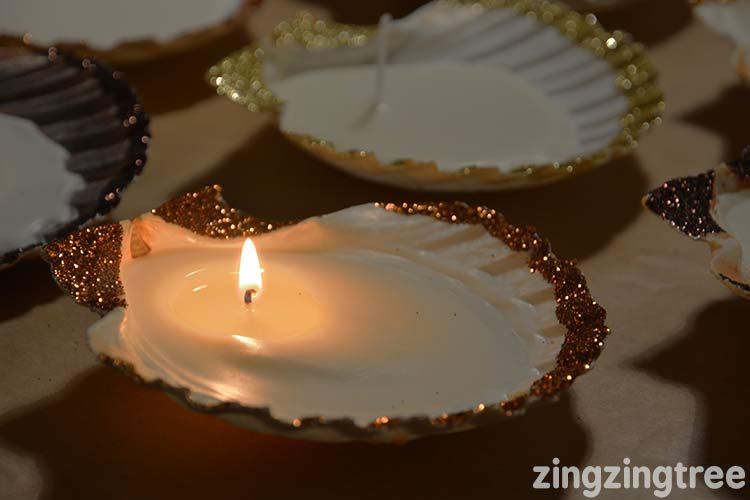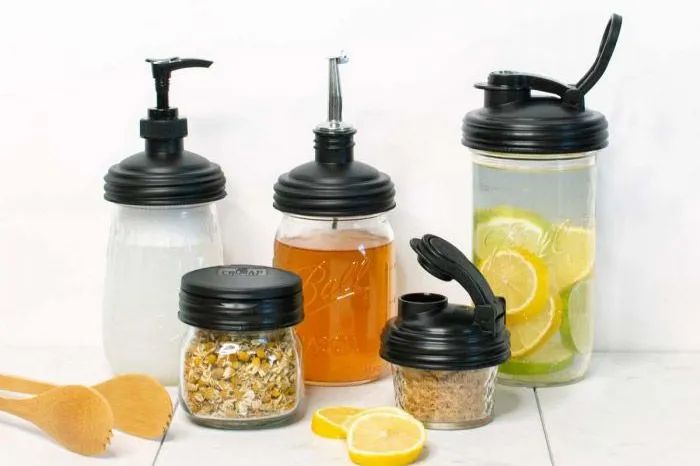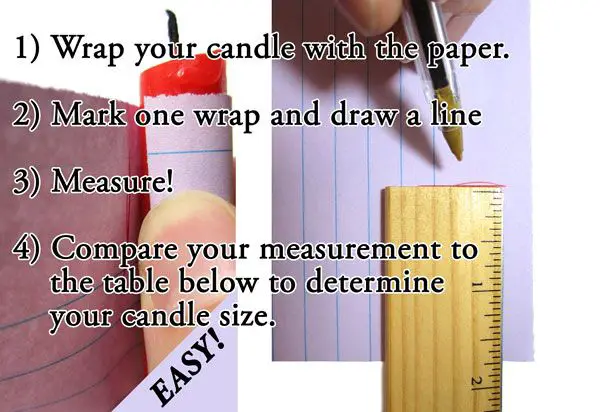What Is The Standard Size Of A Jelly Jar?
A jelly jar is a specialized type of glass jar or bottle used for canning jellies and jams. Jelly jars have a distinct history in American kitchens, dating back to 1858 when inventor John Landis Mason created the iconic “Mason jar” with threads that allowed for an airtight seal using a metal lid (History of Ball Mason Jars, Mason jar).
Initially, Mason jars were used by farmers for food preservation, allowing fruits and vegetables to be enjoyed year-round. By the early 1900s, Mason jars had become a staple in many American homes for canning a variety of jams, jellies, fruits, vegetables, and more. The airtight seal allowed foods to be stored for extended periods without spoiling (A Brief History of the Mason Jar).
Today, jelly jars still serve an important role in home food preservation. They are widely used by home cooks to prepare and store jams, jellies, preserves, and marmalades. Their versatility, reusability, and nostalgic design keep jelly jars a staple of many kitchens.
Standard Jelly Jar Sizes
Jelly jars come in a variety of standard sizes to accommodate different volumes of jam, jelly, marmalade, and other canned goods. The most common sizes in the United States are:
- 4 oz – A small 4 ounce jar is good for individual portions of jelly or as gifts.
- 8 oz – An 8 ounce jar is a popular mid-sized jelly jar.
- 12 oz – The 12 ounce size works well for most families.
- 16 oz – Larger families or those who do a lot of canning often use 16 ounce jars.
- 32 oz – For an extra-large batch of preserves, some manufacturers offer 32 ounce jars.

Metric sizes such as 125 ml, 250 ml, and 500 ml are also available from some brands and are frequently used outside of the United States.
Jelly Jar Sizing Standards
Jelly jar sizing standards have historically been set by major manufacturers like Ball and Kerr. These companies established standard sizes and dimensions for household canning jars in the late 19th and early 20th centuries.
Some of the earliest jelly jar sizing standards were set in 1915, when Ball perfected the glass mason jar and lid design. This included popular sizes like pints, quarts, and half-gallons. Over time, additional sizes were introduced as consumer needs evolved. This included smaller jelly jars and wide mouth options.
Today, common jelly jar sizes include 4 oz, 8 oz, 12 oz, 16 oz, 32 oz, and 64 oz. The dimensions and volume capacity for each size is standardized across manufacturers [1]. This enables consumers to purchase interchangeable lids and accessories.[2]
While jelly jar sizes have remained consistent over decades, some updates have modernized the classic design. This includes wide mouth openings, plastic lids, and improved sealing.
Factors Influencing Size
Several key factors influence the standard sizes used for jelly jars:
Intended contents – Jelly jars come in sizes optimized for different types of preserves like jams, jellies, marmalades, conserves, and butters. Smaller jars around 4 oz are best for jellies, while larger pint and quart sizes allow canning larger batches of chunkier jams or fruits.[1]
Consumer preferences – Manufacturers produce jars in the most popular consumer sizes for gifting, kitchen use, and displaying. Half-pint and pint sizes are common for jellies and jams to fit family meal sides. Larger quart jars allow bulk home canning. Tiny 2-4 oz jars are favored for gifts. [2]
Manufacturing considerations – Standard jar dimensions allow efficient production, labeling, sealing, and packing. Uniform mouth sizes fit with specialized lids and bands. Popular sizes are mass produced for economy of scale.
Shape and Dimensions
Most jelly jars are cylindrical in shape, as this is the most efficient design for glass jars. Some companies, however, create unique jelly jar designs that are shaped differently. For example, the jar could be square, octagonal, or more organic in shape like a leaf jar or heart-shaped jar.
The typical dimensions of a standard jelly jar are around 4-6 inches tall with a diameter of 2.5-3.5 inches. The depth from top to bottom is usually 4-5 inches. Smaller jelly jars may be 3-4 inches tall with a 2-2.5 inch diameter. Larger jars can be up to 8 inches tall with a 4 inch diameter.
According to Deco Lighting, their LED Jelly Jar light fixture has the following dimensions: Cast iron housing, 4.5″ diameter, 5.875″ height. This gives a sense of a standard jelly jar’s width and height.
Manufacturers aim to create jelly jars with an optimal height to diameter ratio so the jar is easy to grip and utilize. The opening diameter is also important for getting a spoon inside the jar. Typical lids are 2.5-3 inches in diameter to fit snugly onto the jar.
Materials
Jelly jars are most commonly made from either glass or plastic. Glass and plastic each have their own advantages and disadvantages for jelly jar manufacturing.
Glass jars are more rigid and durable than plastic jars. They also provide an airtight seal to preserve jelly freshness. However, glass is heavier and more fragile than plastic. It’s prone to breaking if dropped and costs more to ship due to the extra weight. Glass production also tends to have a higher carbon footprint than plastic production.
Plastic jars are cheaper and lighter than glass. They are impact resistant and won’t shatter if dropped. Plastic is also more versatile in shapes and can be molded into ergonomic designs. However, plastic is not as rigid and durable as glass over many uses. It can warp and scratch more easily. Plastic is also more permeable than glass, so may not provide as airtight of a seal for long-term storage.
Both glass and plastic have tradeoffs. For short-term jelly storage, plastic provides cost savings. But for long-term preservation, glass is often preferred for its impenetrable seal and durability over repeated uses. The choice often depends on the specific application and needs.
Lids and Closures
The lids and closures used for jelly jars are an important factor to consider for maintaining freshness and preventing contamination. There are two main types of lids used – metal and plastic.
Metal lids are typically made from tin-plated steel and feature a sealing compound lining which creates an airtight seal when used in conjunction with the matching screw-on ring. The seal prevents air from entering and preserves the contents. Metal lids must be used with screw-on rings and cannot be used with snap-on plastic lids.
Plastic lids are lighter weight and lower cost options but do not provide as robust of a seal as metal lids. Plastic lids typically have a snap-on design that seals to the matching jar rim. They can be reused but the sealing performance degrades over time. For short term storage, plastic lids suffice, but for long term canning and preservation, metal lids are recommended.
The choice between screw-on metal and snap-on plastic lids depends on the specific use case. For commercially sold jellies, plastic lids keep costs low. For home canning enthusiasts, metal lids enable extended shelf life. However, both options are common and provide safe sealing for jelly jars.
Labeling
There are certain labeling requirements that jelly jar manufacturers must follow. The FDA has guidelines that require listing nutrition facts, ingredients, and the manufacturer’s name and address. The jars must also indicate the volume of the contents. This helps consumers know exactly what they’re purchasing.
In addition to the required labeling, many manufacturers offer custom labeling options. This allows consumers or commercial users to add their own branding or designs to the jars. Custom labels can include logos, decorative images, custom text, and more. The customization makes the jars stand out on store shelves or at farmers markets when filled with homemade jellies or jams. Having the ability to create unique, personalized labeling helps promote brands and products.
Major Jelly Jar Manufacturers
There are several major brands that manufacture jelly jars in the United States:
Burch Bottle – Based in New York, Burch Bottle offers a variety of jelly jar sizes from 4 oz to 12 oz. They sell retail, wholesale, and do custom decorating and packaging.
Ball – Known for their Mason jars, Ball produces jelly jars in both regular and wide mouth sizes from 4 oz to 12 oz. They sell retail packs and bulk cases for canning.
Some other major jelly jar brands include Kerr, Golden Harvest, Anchor Hocking, and Bernardin. Most offer a range of standard jelly jar sizes and sell both retail and bulk options.
In addition to the major brands, many smaller companies produce custom jelly jars for specialty food producers, private labeling, and wedding favors.
Future Outlook
Many experts predict that standard jelly jar sizes will remain fairly consistent in the coming years, as manufacturers aim to maintain compatibility with existing lids and labeling practices. However, there are some interesting innovations on the horizon.
One trend is the development of novel materials such as lightweight plastics and recyclable metals for jelly jars. This could lead to new shapes beyond the traditional rounded glass jar, while retaining a similar capacity. Manufacturers are also experimenting with ergonomic designs and built-in features like pouring spouts.
Sustainability is a major priority, with brands like Ball leading the shift towards recyclable and eco-friendly packaging. More glass and metal jars are expected, reducing reliance on plastics. Smart labeling and barcode technology could also emerge, helping track jars across supply chains.
While standard sizes are likely to persist for consistency, the future of jelly jar design seems bright. Brands balance tradition and innovation through materials, functionality and sustainability. Experts predict that forward-thinking features will improve the user experience while maintaining the nostalgic appeal of timeless jelly jars.



